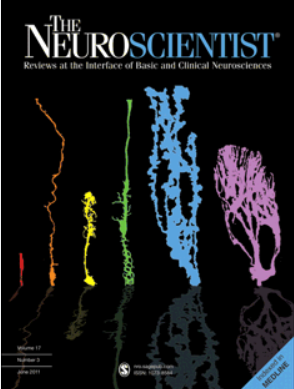偏头痛的DNA损伤和修复:氧化应激及其他。
IF 3.5
3区 医学
Q1 CLINICAL NEUROLOGY
引用次数: 10
摘要
脑内能量生成以改善偏头痛患者的能量不足导致氧化应激,因为它与活性氧(ROS)有关,活性氧(ROS)可能损害DNA,并在脑膜中显示由瞬时受体电位阳离子通道亚家族a成员1 (TRPA1)介导的前感觉作用。最近的研究表明,在有丝分裂后神经元基因组的特定位点存在高水平的单链断裂(SSBs),并指出SSB修复(SSBR)是中枢神经系统稳态的重要组成部分。DNA拓扑异构酶1 (TOP1)在神经元刺激(包括皮层扩散抑制)下稳定在DNA损伤诱导状态。聚adp核糖聚合酶1 (PARP-1)和x射线修复交叉互补1 (XRCC1)是SSBR的关键蛋白,其损伤可能通过瞬时受体电位美拉他汀2 (TRPM2)与偏头痛有关。TRPM2也可能通过氧化应激相关SSBs激活PARP-1介导偏头痛相关神经炎症。综上所述,PARP-1和XRCC1受损引起的SSBR活性异常可能与偏头痛脑病理现象有关。这种异常的SSBR导致由ROS诱导的ssb缺乏修复或错误修复,或由TOP1受损引起。因此,SSBR成分可能被认为是偏头痛的潜在药物靶点。本文章由计算机程序翻译,如有差异,请以英文原文为准。
DNA Damage and Repair in Migraine: Oxidative Stress and Beyond.
Energy generation in the brain to ameliorate energy deficit in migraine leads to oxidative stress as it is associated with reactive oxygen species (ROS) that may damage DNA and show a pronociceptive action in meninges mediated by transient receptor potential cation channel subfamily A member 1 (TRPA1). Recent studies show high levels of single-strand breaks (SSBs) at specific sites in the genome of postmitotic neurons and point at SSB repair (SSBR) as an important element of homeostasis of the central nervous system. DNA topoisomerase 1 (TOP1) is stabilized in the DNA damage-inducing state by neuronal stimulation, including cortical spreading depression. Impairment in poly (ADP-ribose) polymerase 1 (PARP-1) and X-ray repair cross complementing 1 (XRCC1), key SSBR proteins, may be linked with migraine by transient receptor potential melastatin 2 (TRPM2). TRPM2 may also mediate the involvement of migraine-related neuroinflammation with PARP-1 activated by oxidative stress–related SSBs. In conclusion, aberrant activity of SSBR evoked by compromised PARP-1 and XRCC1 may contribute to pathological phenomena in the migraine brain. Such aberrant SSBR results in the lack of repair or misrepair of SSBs induced by ROS or resulting from impaired TOP1. Therefore, components of SSBR may be considered a prospective druggable target in migraine.
求助全文
通过发布文献求助,成功后即可免费获取论文全文。
去求助
来源期刊

Neuroscientist
医学-临床神经学
CiteScore
11.50
自引率
0.00%
发文量
68
期刊介绍:
Edited by Stephen G. Waxman, The Neuroscientist (NRO) reviews and evaluates the noteworthy advances and key trends in molecular, cellular, developmental, behavioral systems, and cognitive neuroscience in a unique disease-relevant format. Aimed at basic neuroscientists, neurologists, neurosurgeons, and psychiatrists in research, academic, and clinical settings, The Neuroscientist reviews and updates the most important new and emerging basic and clinical neuroscience research.
 求助内容:
求助内容: 应助结果提醒方式:
应助结果提醒方式:


